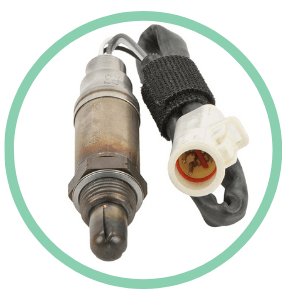
One of the most annoying things that can happen when we are driving our vehicles is when we get the reduced engine power light.
Most of the time, reduced engine power doesn’t make commuting home possible since the max speed your Ford F350 will reach is not going to be enough to keep you safe on the highway.
If your F350 has gotten this reduced engine power warning, it means that one of its engine management sensors or the ECU have gone bad.
It’s effectively “in the dark” without enough vital telemetry to control the engine properly. Without enough data, the ECU will just give you enough power to not leave you totally stranded, and may run the engine in an entirely different way.
Quick Help Table
| Possible Causes | Associated Trouble Code | Solution |
|---|---|---|
| Faulty turbocharger | P0299 | Replace turbocharger |
| Clogged air filter | No associated trouble code | Clean or replace air filter |
| Faulty mass air flow sensor | P0101, P0102, P0103, P0104 | Replace mass air flow sensor |
| Faulty fuel injectors | P0201, P0202, P0203, P0204, P0205, P0206, P0207, P0208 | Replace fuel injectors |
| Faulty fuel pressure regulator | P0087, P0088 | Replace fuel pressure regulator |
| Faulty EGR valve | P0401, P0402, P0403, P0404 | Replace EGR valve |
| Faulty throttle position sensor | P0120, P0121, P0122, P0123 | Replace throttle position sensor |
| Faulty accelerator pedal position sensor | P2120, P2121, P2122, P2123 | Replace accelerator pedal position sensor |
| Faulty wiring or connections | No associated trouble code | Inspect and repair wiring or connections |
Reduced Engine Power Causes: Ford F350
If you have the reduced engine power light, then there are going to be some diagnostic trouble codes stored in your OBD II system.
This is great news, since it helps narrow down where the ECU thinks that the problem is. A good code scanner is really cheap and can make the process a whole lot smoother.
Here are some of the most typical problems that can make your F350’s reduced engine power warning come on:
Throttle Body
This is one of the most common reasons the reduced engine power light comes on. If the ECU isn’t getting the proper voltage response from the throttle body, it can’t be sure of how much it’ll really accelerate your F350 from the gas pedal input.
At this point, it turns on the reduced engine power mode in order to keep the vehicle from running away from you.
O2 Sensors
Your F350’s oxygen sensors measure the amount of oxygen in the exhaust to help insure that the proper air/fuel mixture is realized. If they totally go bad they usually don’t trigger the reduced engine power mode, but if you plug your code scanner and it comes up with an oxygen sensor related code such as P0160, it’s definitely worth taking a look at them. While they don’t often na
Throttle Position Sensor
The throttle position sensor is one of the most vital sensors in your F350. If it’s not responding, the ECU has no way of telling how much gas gas you’ve given it. The TPS data also helps determine when the transmission will shift.
ECU
Another common cause of a reduced power condition is , if the ECU goes bad it can trigger the reduced engine power condition. It is responsible for taking the data from all of the sensors above, and combining it with the data from many other sensors to control the engine.
Symptoms
When a Ford F350 experiences reduced engine power, there are several symptoms that may occur. These symptoms can be indicators that the truck is experiencing issues with its engine management sensors or its ECU.
Some of the most common symptoms of reduced engine power in a Ford F350 include:
- Warning lights: One of the most noticeable symptoms of reduced engine power is the appearance of warning lights on the dashboard. These lights may include the check engine light, the reduced engine power light, and the service engine soon light. These lights will typically appear when the truck’s computer detects an issue with the engine that requires attention.
- Loss of power: Another symptom of reduced engine power is a loss of power when driving. The truck may struggle to accelerate, or it may not be able to reach its maximum speed. This can be especially noticeable when driving up hills or towing heavy loads.
- Poor fuel efficiency: When a truck experiences reduced engine power, it may also experience poor fuel efficiency. This is because the engine is not working as efficiently as it should be, which means that it may be using more fuel than necessary to perform its functions.
- Stalling: In some cases, a truck with reduced engine power may stall or shut off unexpectedly. This can be dangerous if it occurs while the truck is in motion, as it can cause a loss of control.
If you notice any of these symptoms in your Ford F350, it is important to have the truck inspected by a qualified mechanic as soon as possible. Ignoring these symptoms can lead to further damage to the engine or other components of the truck.
Should You Drive Your F350 with the Reduced Power Light

The idea behind the reduced engine power condition is to allow you to limp your F350 into the shop or back home. It is not meant to sustain long periods of vehicular operation. Not being able to go 40MPH (which is almost always the case) is a safety risk.
When the engine power has been reduced, the engine and transmission can operate in totally different ways. This leads to jerky shifts, unstable acceleration, and horrible gas mileage.
Conclusion
Good luck diagnosing your F350’s reduced engine power light. If there is anything that you would like to add, please feel free to leave a comment below.



